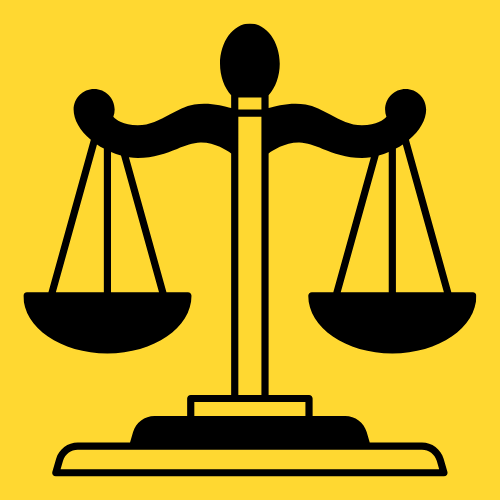Hamisi Hassani and another v. R., Crim. Rev. 28-A-69, 22/10/69, Platt J.
Two accused Hamisi Hassan and Mathias Tupa were convicted of possession of gemstones contrary to section 3 of the Gemstones Industry (Development and Protection) Act No. 11 of 1967. Each accuse, who was 18 years old, pleaded guilty to being found in possession of various gemstones on the 30th July 1969. in the case of Hamisi, he had Shs. 114/- worth of pink garnets, as well as a quantity of smoky quartz of no value and was fined Shs. 100/- or three months’ imprisonment in default. In the case of Mathias, he had Shs. 9/- worth of pink garnets, and was sentenced to six months imprisonment. Both appellants were dealt with on the 13th August 1969.
Held: (1) “It is clear that Act No. 11 of 1967 did not come into operation until the 1st August 1969 by virtue of Government Notice No. 203 of 1969. Accordingly, as act No. 11 had no retrospective effect through any saving clauses, it was not in force on the date in question. The charge should have been laid under sections 72 and 73 of the Mining Ordinance Cap. 123 and Government Notice No. 709 of 1964 if it was considered that pink garnets were gemstones in their unmanufactured state …. As explained in Papadopolous v. R. 1969 H.C.D. n. 237 I consider it would have been possible to substitute a charge and conviction under the Mining Ordinance. That irregularity might have been curable but there is yet another difficulty to be surmounted.” (2) “Under either the Gemstone Act of 1967 or the Mining Ordinance Cap. 123, it is not possession alone which constitutes the offence, but possession as an unauthorized miner or dealer (see section 3 of the Gemstone Act) or possession by a person who does not hold a mining lease, claim or prospecting licence or right or a licence to purchase under section 75 of the Mining Ordinance. (See section 73 of the Ordinance). In both cases, all the accused admitted was possession; all that the prosecution averred in the facts was possession. Therefore the pleas were not unequivocal to a proper charge under either the act or the Ordinance.” (3) “Mathias was misled into thinking that he had 139 gemstones although by an amendment in the charge he was only charged with a lesser amount o pink garnet weighing 18 grams, otherwise there were 29 grams of tourmaline. Now by virtue of Government Notice No. 341 of 1968 (which must be said to have come into operation with the Act on 1st August 1969) gemstones are prescribed firstly according to the list and secondly other stones excluding diamonds normally used in making jewellery. The list included “gem varieties of garnet” Presumably a gem variety is one used in making jewellery. In my view there ought to be a statement after a plea, or evidence at a trial that the garnet in question is gem variety. However as Mathias admitted he had gemstones that was probably sufficient despite his mistake as to the number of such stones he actually had.” (4) “It is not without interest however to consider the other stones in the charges which were at some stage deleted. In Mathias’ case for instance, tourmaline was charged and deleted. Tourmaline is one of the specified gemstones. Nothing is said that it must be of gem variety, or normally used in making jewellery. Unauthorised possession of tourmaline is therefore an offence. But the prosecution no
doubt deleted it because the stones found were said to be of “no economic importance”. Sensible as that may be, it is a technical offence as the law stands. In Hassan’s case, beryl of “no gem quality” was deleted. It seems that it is not the quality but the variety of beryl which is of importance. The Schedule specifies “Emerald and other gem varieties of beryl”. Once beryl is of gem variety, its value or quality is not in point as far as an infringement of the Act is concerned. Probably, as it was said to have no gem quality, it was understood to mean that it was not of gem variety. Hamisi also had 27 grams of smoky quartz. This was left in the charge although these stones were said t have no commercial value. Quartz comes under the heading in the Schedule – “amethyst and other gem varieties of quartz.” I need only add that it would have been proper to state whether the smoky quartz was of gem variety. Here the prosecution seems to have understood that though the stones actually had no commercial value, never-the less they were gemstone and Hamisi was accordingly charged. Finally Hamisi had some cyanite. That is a mineral not prescribed and unless it is used in making Jewellery, It is not a gemstone. It was very properly dropped from the charge as it was not of “gem quality”, and of no commercial value. These charges display some of the confusion attending prosecutions under the act of 1967 and the consequent difficulty in passing sentence. It seems to me that certain stones whatever the value, are prohibited ipso facto according to the schedule. Baryl, quartz, garnet and zoisite are prescribed if of gem variety, whatever their value. There may be a third category of other stones not specified in the Schedule which are used in making jewellery. I have hazarded the opinion that “a gem variety” may simply mean the equivalent of a stone with which jewellery is made. At any rate, I shall take it as such until corrected.” Appeals allowed and convictions quashed.

%20(18).png)
%20(10).png)

%20(700%20x%20300%20px)%20(600%20x%20300%20px)%20(1).gif)


%20(27).png)
%20(28).png)
0 Comments
PLACE YOUR COMMENT HERE
WARNING: DO NOT USE ABUSIVE LANGUAGE BECAUSE IT IS AGAINST THE LAW.
THE COMMENTS OF OUR READERS IS NOT OUR RESPONSIBILITY.